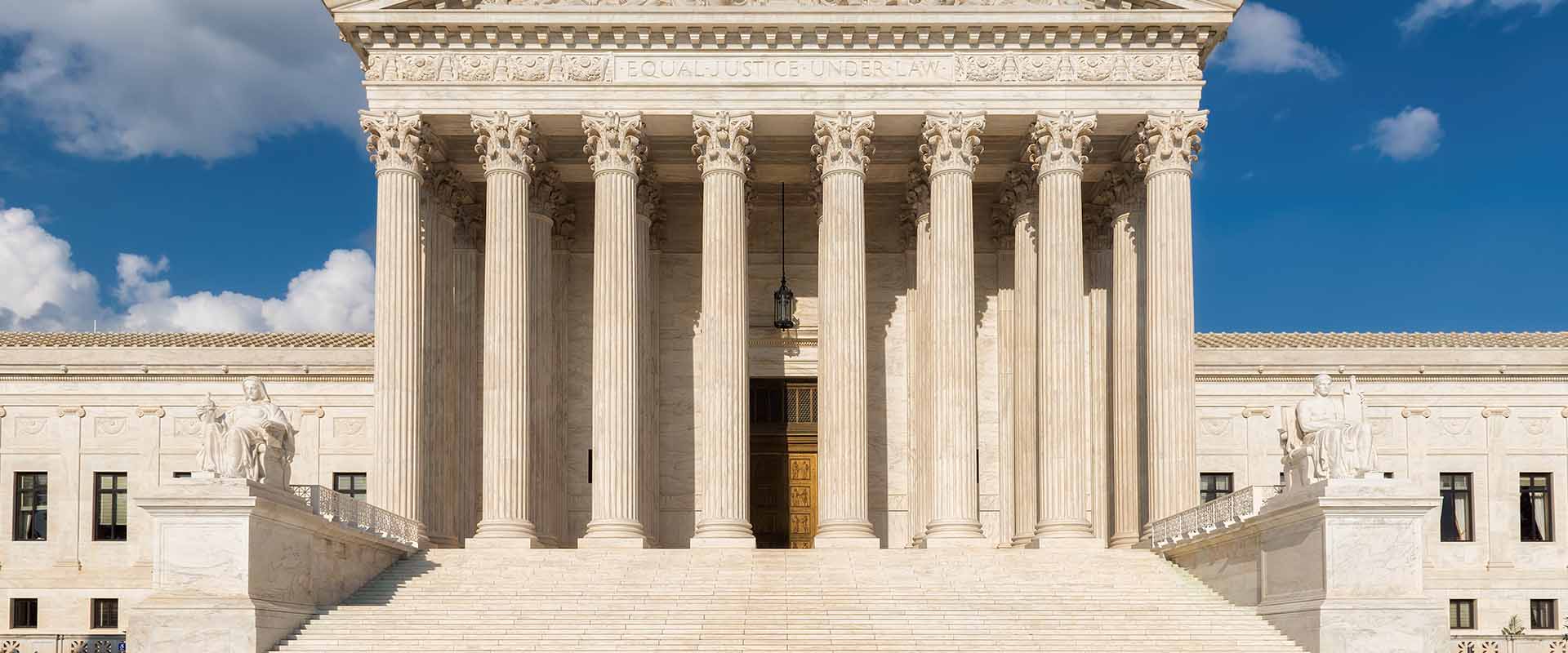School Board Prevails Against PERB in For-Cause Dismissal of Union President

February 2024
Number 8
On January 9, 2024, California’s Fifth District Court of Appeal issued a unanimous published decision in Visalia Unified School District v. Public Employment Relations Board (2024) ___ Cal.Rptr.3d ___, finding that Visalia Unified School District (VUSD) terminated a permanent classified employee – who also served as the union president – for her ongoing poor performance and not in retaliation for engaging in protected union activity under the Educational Employment Relations Act (EERA). In so holding, the Court overturned the decision of the Public Employment Relations Board (PERB) and provided useful guidance to public agency employers in cases brought under the EERA and similar statutes. Lozano Smith attorneys Gabriela Flowers and Sloan Simmons successfully represented VUSD in this case.
Background
Following years of unsatisfactory performance, VUSD’s Governing Board adopted the proposed decision of a hearing officer finding good cause for terminating a permanent classified employee who served as the president of the local chapter of the California School Employees Association (CSEA). Six months after the termination, CSEA filed an unfair labor practice charge with PERB arguing that the employee was terminated for engaging in protected activity as a union officer. PERB agreed with CSEA, and the District appealed the decision to the Fifth District Court of Appeal.
Important Holdings from the Case
1. PERB Must Accept School Board’s Finding of Good Cause for Discipline.
The Board terminated the employee pursuant to Education Code section 45113, which provides due process for employees in disciplinary actions, including termination for cause. The statute makes clear that the school board’s “determination of the sufficiency of the cause for disciplinary action shall be conclusive.” The Court recognized that in cases where the employee also alleges retaliation for protected union activity, there was no decisional law discussing the intersection of Education Code section 45113 and the EERA. Thus, on an issue of first impression, the Court held: “Education Code section 45113 vests in school boards the power to determine cause. PERB is entitled to review facts and resolve disputes to determine whether retaliation has occurred, but when Education Code section 45113 applies, it cannot override a finding sufficient cause for discipline existed. In other words, PERB must start with one fact already proved: sufficient cause existed for the discipline at issue. PERB may still find retaliation, but it cannot negate cause.” Importantly, the Court also held that it was inappropriate for PERB to determine whether the discipline imposed by the school board was a disproportionate penalty because the school board’s finding of good cause for termination was conclusive.
2. Service as a Union Officer Alone is Protected Activity in Retaliation Cases Under PERB-Administered Statutes, With Some Important Nuances.
In the underlying PERB decision, PERB overturned its own precedent to find that union officer status alone is a protected activity in retaliation cases. While the Court upheld PERB’s finding on this point, the Court was mindful of concerns raised by VUSD and, to address those concerns, provided useful analysis for future cases involving alleged retaliation against union officers.
First, union officer status alone will often be insufficient to show retaliation. “Because employees relying on officer status alone will often find it difficult to prove retaliation, the ‘litany of PERB decisions articulating the contours of what is and is not protected activity’ becomes more important.” (Emphasis in original.) In this way, the Court signaled that a union officer will need to do more than merely hold union office to have a cognizable claim of retaliation.
Second, the Court provided clarity on the proof needed for a union or employee to show unlawful motivation, which is necessary to make a prima facie showing of retaliation under the EERA and related statutes. Specifically, one of the elements used to show unlawful motivation is the timing between the protected activity and the adverse employment action. The closer in time between the two, the stronger the inference that the action was unlawfully motivated. The Court noted that “VUSD’s concern about union service and temporal proximity is adequately addressed by identifying the appropriate endpoints. For example, it is possible for an employee to hold a union office for years. Given that potential lengthy period, the longer an employee holds office without experiencing adverse action, the less likely it is that any adverse action was due to the employee’s union status. Accordingly, properly assessing temporal proximity based on officer status alone requires considering the time period between the employee assuming office and experiencing an adverse action.” This modified temporal proximity test gives employers a more favorable metric in cases of retaliation where the union officer’s status is the only protected activity at issue.
3. The Court Reiterates Public Employer’s Discretion to Discipline Employees in Finding that VUSD Would Have Terminated the Union President Notwithstanding Her Protected Activity.
In finding for VUSD, the Court reiterated a public employer’s discretion to discipline employees: “Employers need not await disaster to abate catastrophe. … Potential liability and likely recurrence are sufficient to act.” The Court also bolstered the sound reasoning in Thornbrough v. Western Placer Unified School District (2013) 223 Cal.App.4th 169. In that case, the court held that it was permissible to use evidence outside the statute of limitations in classified dismissal cases to determine the appropriateness of the discipline sought. While this issue was never raised by CSEA before PERB, the Court reaffirmed Thornbrough’s holding that “all relevant facts should be considered in assessing punishment,” including “past discipline.”
Visalia Unified School District v. Public Employment Relations Board represents an important victory for public agency employers and validates an employer’s right to manage its workforce, which includes disciplining employees for poor performance or misconduct, regardless of the employee’s position within a union.
If you have any questions about Visalia Unified School District v. Public Employment Relations Board or need guidance related to employee discipline, please contact the authors of this Client News Brief or any attorney at one of our eight offices located statewide. You can also subscribe to our podcasts, follow us on Facebook, Twitter and LinkedIn or download our mobile app.
Number 8
On January 9, 2024, California’s Fifth District Court of Appeal issued a unanimous published decision in Visalia Unified School District v. Public Employment Relations Board (2024) ___ Cal.Rptr.3d ___, finding that Visalia Unified School District (VUSD) terminated a permanent classified employee – who also served as the union president – for her ongoing poor performance and not in retaliation for engaging in protected union activity under the Educational Employment Relations Act (EERA). In so holding, the Court overturned the decision of the Public Employment Relations Board (PERB) and provided useful guidance to public agency employers in cases brought under the EERA and similar statutes. Lozano Smith attorneys Gabriela Flowers and Sloan Simmons successfully represented VUSD in this case.
Background
Following years of unsatisfactory performance, VUSD’s Governing Board adopted the proposed decision of a hearing officer finding good cause for terminating a permanent classified employee who served as the president of the local chapter of the California School Employees Association (CSEA). Six months after the termination, CSEA filed an unfair labor practice charge with PERB arguing that the employee was terminated for engaging in protected activity as a union officer. PERB agreed with CSEA, and the District appealed the decision to the Fifth District Court of Appeal.
Important Holdings from the Case
1. PERB Must Accept School Board’s Finding of Good Cause for Discipline.
The Board terminated the employee pursuant to Education Code section 45113, which provides due process for employees in disciplinary actions, including termination for cause. The statute makes clear that the school board’s “determination of the sufficiency of the cause for disciplinary action shall be conclusive.” The Court recognized that in cases where the employee also alleges retaliation for protected union activity, there was no decisional law discussing the intersection of Education Code section 45113 and the EERA. Thus, on an issue of first impression, the Court held: “Education Code section 45113 vests in school boards the power to determine cause. PERB is entitled to review facts and resolve disputes to determine whether retaliation has occurred, but when Education Code section 45113 applies, it cannot override a finding sufficient cause for discipline existed. In other words, PERB must start with one fact already proved: sufficient cause existed for the discipline at issue. PERB may still find retaliation, but it cannot negate cause.” Importantly, the Court also held that it was inappropriate for PERB to determine whether the discipline imposed by the school board was a disproportionate penalty because the school board’s finding of good cause for termination was conclusive.
2. Service as a Union Officer Alone is Protected Activity in Retaliation Cases Under PERB-Administered Statutes, With Some Important Nuances.
In the underlying PERB decision, PERB overturned its own precedent to find that union officer status alone is a protected activity in retaliation cases. While the Court upheld PERB’s finding on this point, the Court was mindful of concerns raised by VUSD and, to address those concerns, provided useful analysis for future cases involving alleged retaliation against union officers.
First, union officer status alone will often be insufficient to show retaliation. “Because employees relying on officer status alone will often find it difficult to prove retaliation, the ‘litany of PERB decisions articulating the contours of what is and is not protected activity’ becomes more important.” (Emphasis in original.) In this way, the Court signaled that a union officer will need to do more than merely hold union office to have a cognizable claim of retaliation.
Second, the Court provided clarity on the proof needed for a union or employee to show unlawful motivation, which is necessary to make a prima facie showing of retaliation under the EERA and related statutes. Specifically, one of the elements used to show unlawful motivation is the timing between the protected activity and the adverse employment action. The closer in time between the two, the stronger the inference that the action was unlawfully motivated. The Court noted that “VUSD’s concern about union service and temporal proximity is adequately addressed by identifying the appropriate endpoints. For example, it is possible for an employee to hold a union office for years. Given that potential lengthy period, the longer an employee holds office without experiencing adverse action, the less likely it is that any adverse action was due to the employee’s union status. Accordingly, properly assessing temporal proximity based on officer status alone requires considering the time period between the employee assuming office and experiencing an adverse action.” This modified temporal proximity test gives employers a more favorable metric in cases of retaliation where the union officer’s status is the only protected activity at issue.
3. The Court Reiterates Public Employer’s Discretion to Discipline Employees in Finding that VUSD Would Have Terminated the Union President Notwithstanding Her Protected Activity.
In finding for VUSD, the Court reiterated a public employer’s discretion to discipline employees: “Employers need not await disaster to abate catastrophe. … Potential liability and likely recurrence are sufficient to act.” The Court also bolstered the sound reasoning in Thornbrough v. Western Placer Unified School District (2013) 223 Cal.App.4th 169. In that case, the court held that it was permissible to use evidence outside the statute of limitations in classified dismissal cases to determine the appropriateness of the discipline sought. While this issue was never raised by CSEA before PERB, the Court reaffirmed Thornbrough’s holding that “all relevant facts should be considered in assessing punishment,” including “past discipline.”
Visalia Unified School District v. Public Employment Relations Board represents an important victory for public agency employers and validates an employer’s right to manage its workforce, which includes disciplining employees for poor performance or misconduct, regardless of the employee’s position within a union.
If you have any questions about Visalia Unified School District v. Public Employment Relations Board or need guidance related to employee discipline, please contact the authors of this Client News Brief or any attorney at one of our eight offices located statewide. You can also subscribe to our podcasts, follow us on Facebook, Twitter and LinkedIn or download our mobile app.
As the information contained herein is necessarily general, its application to a particular set of facts and circumstances may vary. For this reason, this News Brief does not constitute legal advice. We recommend that you consult with your counsel prior to acting on the information contained herein.







